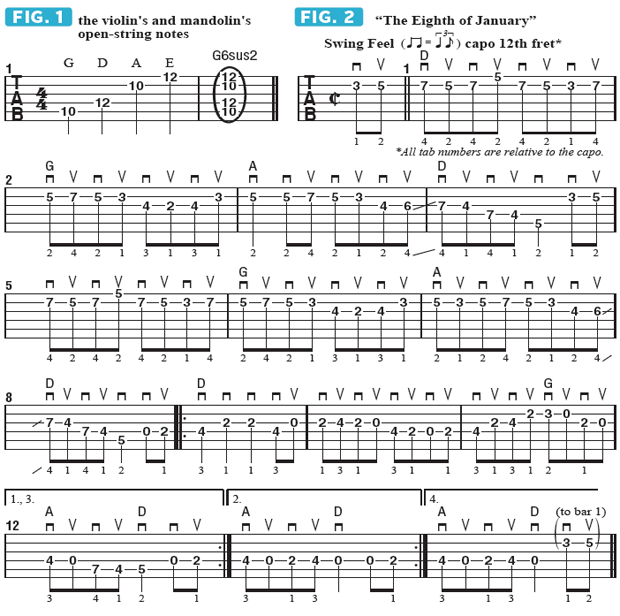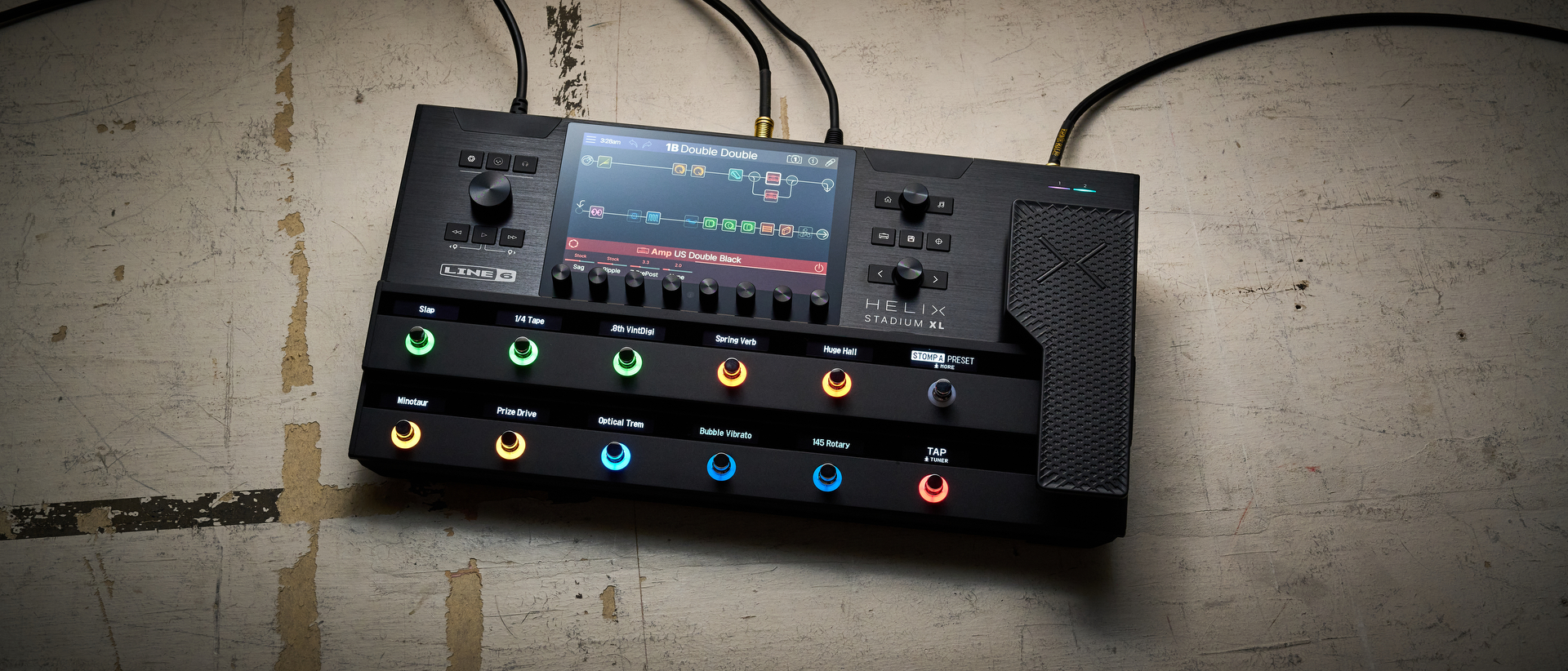How to Sound Like a Bluegrass Mandolin Player — Video

A while back, I came across a book of traditional bluegrass and old-timey fiddle tunes, which intrigued and inspired me.
I had always enjoyed the sound of those upbeat, “honest” folk melodies, with their sprightly contours and swinging eighth-note rhythms, despite their harmonic simplicity—the vast majority of the tunes are based on “one-four-five”-type major-key chord progressions.
As the book was written for violinists (the violin and fiddle are the same instrument), the tunes were notated in standard sheet music, without tablature. Being a sightreader, however, I was able to cop the notes, and I began studying some of the tunes and attempting to adapt them to the guitar, pick-style, just as a bluegrass acoustic guitarist or mandolin player would.
This month, I’d like to show you how I’ve arranged one of these fiddle tune for guitar and demonstrate a neat trick I came up with to make the guitar sound like a mandolin.
The violin has four strings, which are tuned in perfect fifths, low to high, G D A E, the G note being the same pitch as the guitar’s open G string. FIGURE 1 shows a way to play the violin’s four open-string notes together on a standard-tuned guitar. As you can see, the violin not only is tuned quite differently than the guitar but also encompasses a higher pitch range, though there is some overlap. The mandolin, the violin’s sister instrument and fretted equivalent, uses this same tuning, except it has four pairs of closely spaced strings, known as courses, with each course tuned in unison, just like a 12-string guitar’s B and high E strings.
I attempted to play these fiddle melodies on the guitar, mandolin-style, using alternate (down-up) picking, which is commonly referred to in bluegrass as flatpicking. In doing so, I discovered that they were challenging to articulate and perform with any kind of speed, as they typically require frequent string crosses, which is a huge technical challenge for the pick hand. This presented me with a problem to solve, as I refused to just doggedly muscle through the difficult string crosses, which was quite arduous at times and no fun at all.
My creative solution—the previously mentioned trick—was to deploy a capo way up at the 12th fret (on a cutaway electric guitar equipped with a piezo pickup). Doing so enabled me to play the melodies in their original register—an octave higher than you would if looking at the music as if it were written for guitar. It also gave me additional fingering options, as the frets in this upper area of the neck are much closer together, effectively extending my reach. The result is that the instrument sounds and feels more like a mandolin.
All the latest guitar news, interviews, lessons, reviews, deals and more, direct to your inbox!
FIGURE 2 presents my take on the popular bluegrass standard “The Eighth of January,” arranged for pick-style guitar, capo-12. (If you play this arrangement on acoustic guitar, you will need to lower the capo at least two frets and perform it in a lower key, due to the instrument’s wider neck joint.)
I’m using alternate picking, and you’ll see that I strategically arranged the note fingerings so that every string cross is executed with what’s known as “outside-the-strings picking,” which is much easier on the pick hand than “inside-the-strings picking.” There are a few quick position shifts, but they’re not difficult to make because of the short scale.
This arrangement sounds cool all by itself, especially if you tap your foot loudly on beats one and three. But for an authentic, bluegrass-style second-guitar accompaniment, I additionally offer the set of chord voicings shown in FIGURE 3, which are played as if the tune were in the key of C, with a capo at the second fret transposing them up a whole step to the key of D.


Over the past 30 years, Jimmy Brown has built a reputation as one of the world's finest music educators, through his work as a transcriber and Senior Music Editor for Guitar World magazine and Lessons Editor for its sister publication, Guitar Player. In addition to these roles, Jimmy is also a busy working musician, performing regularly in the greater New York City area. Jimmy earned a Bachelor of Music degree in Jazz Studies and Performance and Music Management from William Paterson University in 1989. He is also an experienced private guitar teacher and an accomplished writer.

